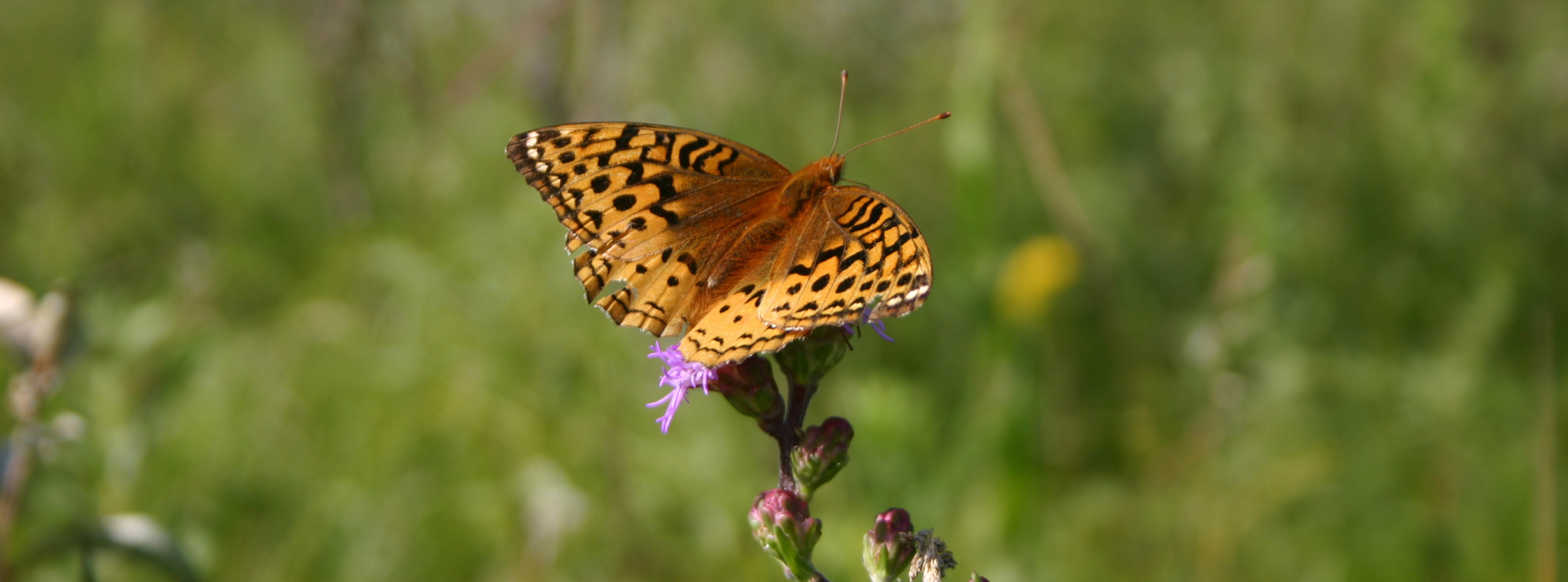Posted on: Thursday June 6, 2019
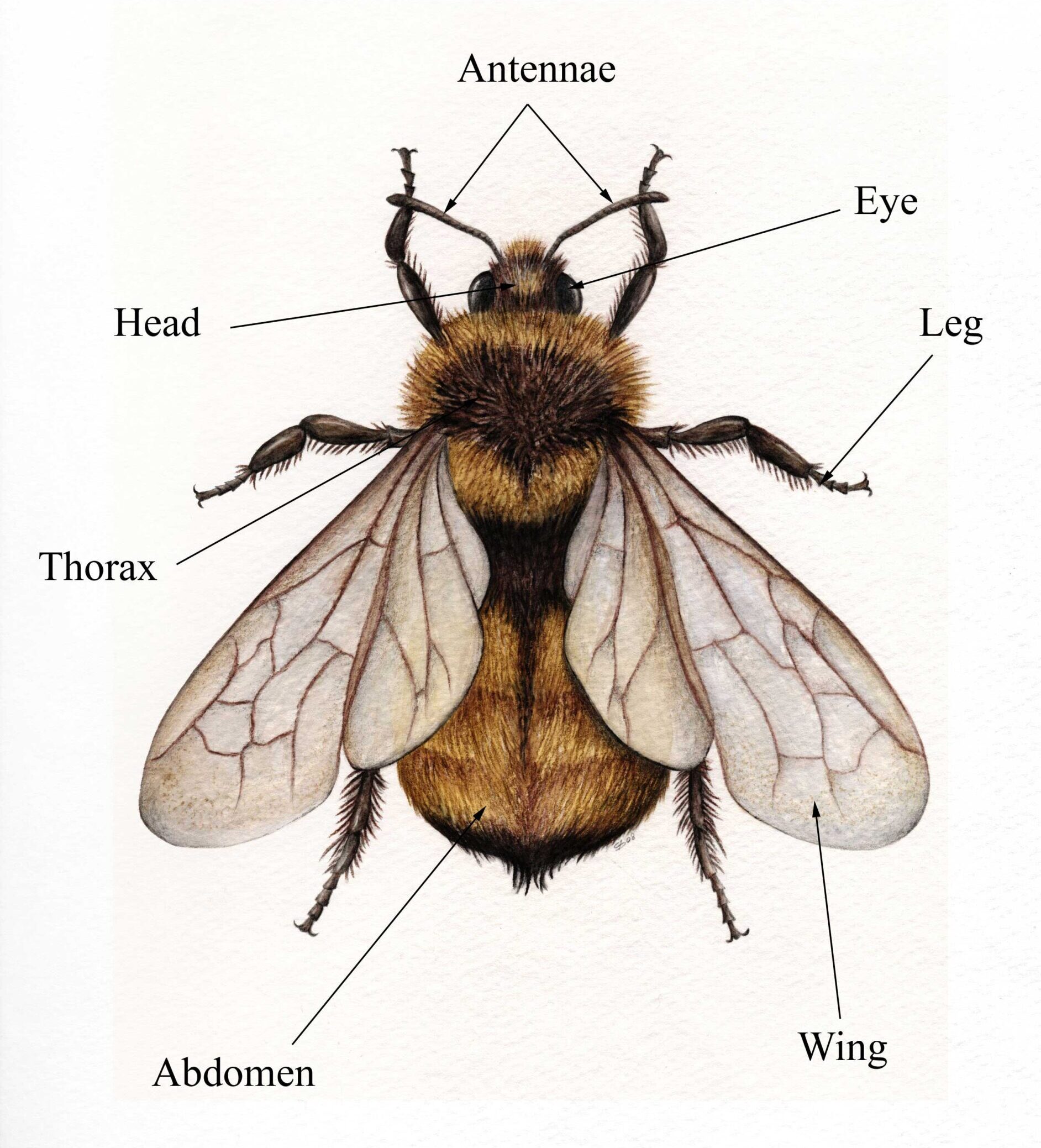
Now that the weather is nice and warm, you’re probably seeing pollinators flying about. The main insect pollinators in Manitoba in order of decreasing abundance are: bees, flies, butterflies, moths, wasps, and beetles. If you’d like to tell them apart, there are a few key features you need to look for. First off, count the number of wings. Are there four or just two? What is the texture like: membranous, hard or covered in tiny scales? Second, look at the body: is it smooth or covered with hairs? Does the area where the chest (thorax) connects to the belly (abdomen) get really narrow? Third, check out the antennae. Are they long, short, smooth or feathery? Lastly, is the insect intentionally gathering pollen on its legs or just drinking nectar? Asking these simple questions will help you identify your pollinator.
Image: Parts of an insect, as labelled on a bumblebee (Bombus sp.). Drawing by Silvia Battaligni
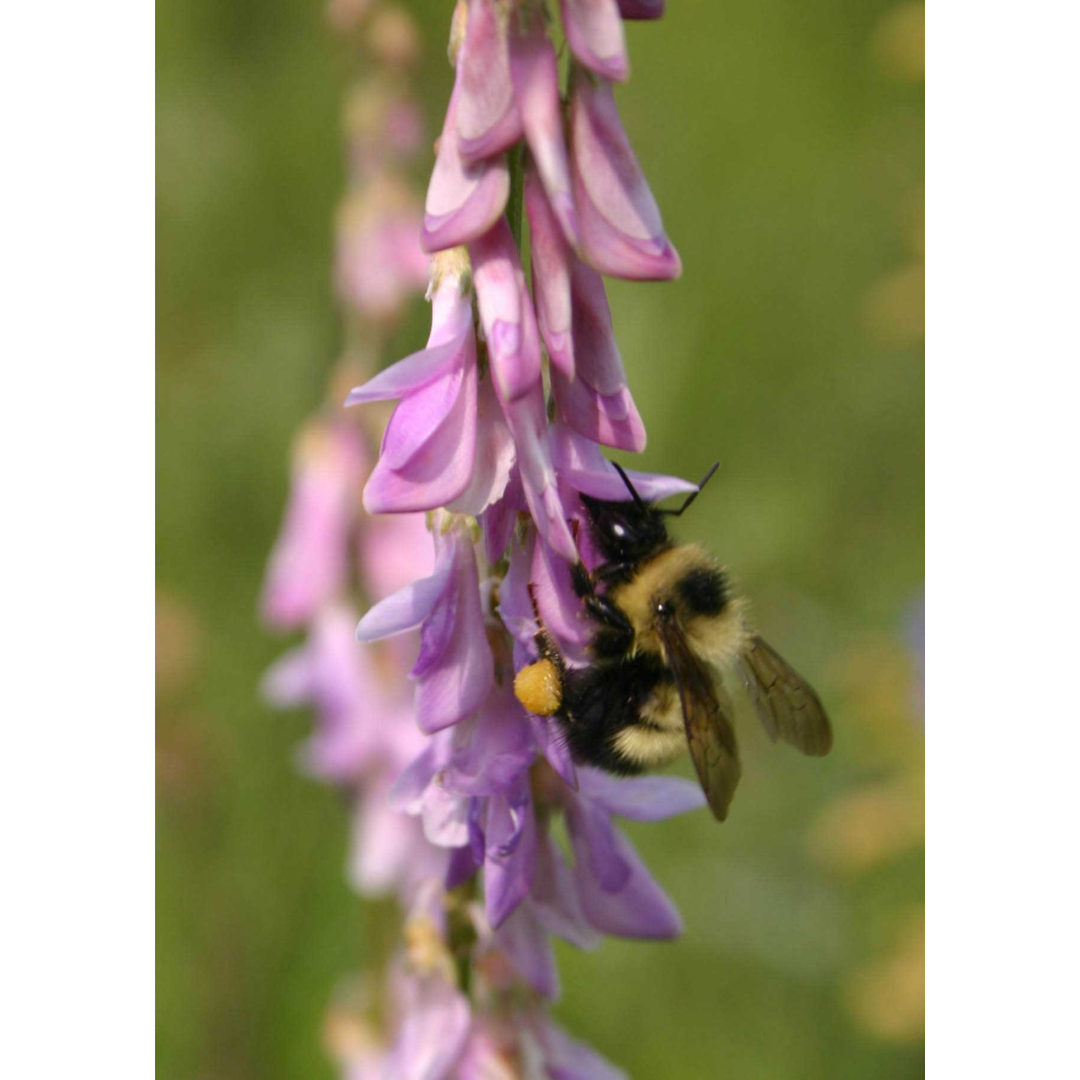
Bees
People are sometimes frightened by bees thanks to stories about “killer bees” but our native ones are actually pretty timid because stinging will kill them. They are usually so intent on feeding that they will ignore you completely. The main bees you will find in Manitoba are bumblebees (Bombus), honeybees (Apis), leafcutter and mason bees (Megachilidae), sweat bees (Halictidae), polyester bees (Colletidae) and mining bees (Andrenidae). Bees like a wide range of plants but seem to prefer yellow, purple or blue flowers. Longer tongued bumblebees prefer tubular plants like legumes.
The key characters of bees include:
- Four lacy (membranous) wings;
- Pronounced waists;
- Long antennae;
- Eyes at the side of the head;
- Lots of branched hairs;
- Pollen-carrying structures like leg baskets (bumblebees & honeybees), leg hairs (sweat, mining and digger bees) or belly hairs (leaf-cutter bees);
- Straight, long- or short-tongues;
- Body colour ranging from pale to dark yellow, orange or white and black striped, rusty brown and black, or shiny blue and green.
Image: Bumblebees (Bombus sp.) like tubular flowers like Hedysarum (Hedysarum boreale). Note the yellow pollen ball on its leg; only bees collect pollen like this.

Wasps
Wasps are closely related to bees but rather than being complete vegetarians, they typically feed their young meat (i.e. usually other insects). Since wasps can sting multiple times, they are usually more aggressive than bees. Most wasp species will not bother you but paper wasps, hornets, or yellow jackets (Vespidae) can be very territorial so give them a wide berth. Wasps have short tongues so they tend to visit flowers that are open or have short floral tubes.
Wasps have:
- Four lacy (membranous) wings;
- Pronounced waists;
- Long antennae;
- Eyes at the side of the head;
- No body hair or unbranched hairs only;
- No pollen-carrying structures;
- Straight short-tongues;
- Body colours that are often bright yellow and black or brown striped, or various solid colours (e.g. black, brown, green).
Image: Sand wasp (Bembixpruinosa) on a hairy prairie-clover (Dalea villosa). Wasps are common in sand hills habitats.
Flies
Surprising to many people is the fact that a wide diversity of flies are pollinators. In fact they are second in importance to bees (take that butterflies!). Flies tend to like open (not tubular) flowers that are white or yellow. Flower flies (Syrphidae) often look similar to bees with yellow or orange and black stripes while bee flies (Bombyliidae) look like tiny pussy willow catkins with wings. Soldier (Stratiomyiidae) and blow flies (Calliphoridae) are often bright green in colour and not very hairy, while parasitic (Tachinidae) and Muscid (Muscidae) flies look very similar to house flies with black or grey bodies and long, coarse hairs.
The key ways to tell these insects apart though are:
- Two wings only;
- No waist;
- Large eyes near the front of the head;
- Short, club-like antennae;
- Unbranched hairs, if any;
- No pollen-carrying structures;
- Straight short or long tongues.
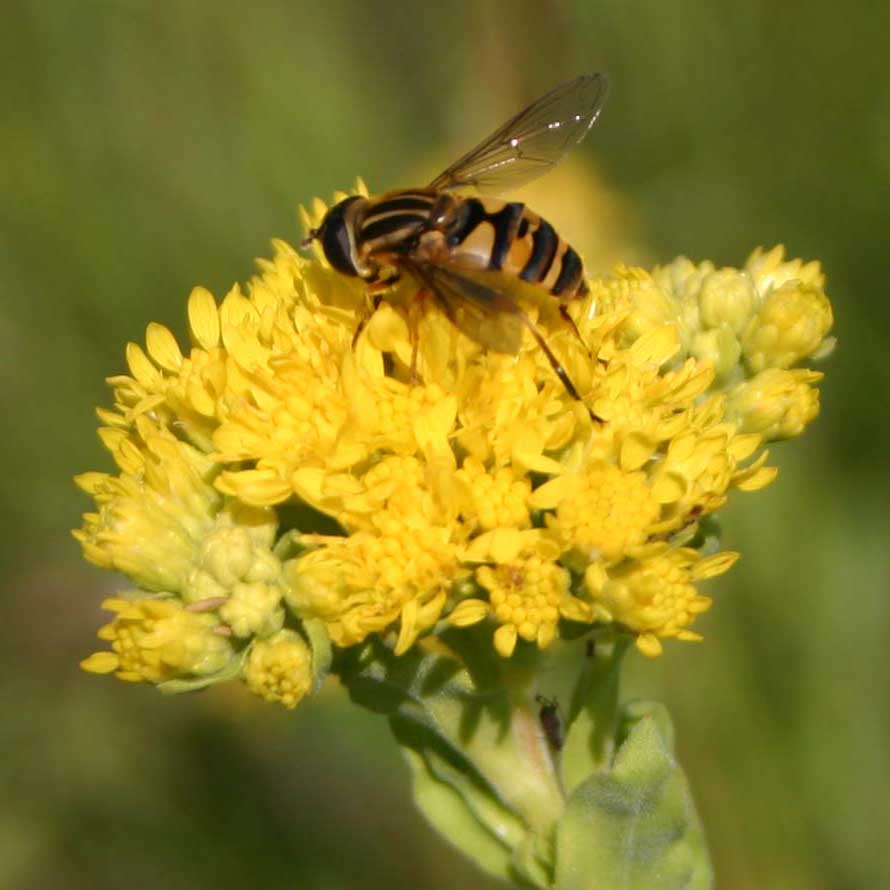
Flower flies (Helophilus sp.) are often striped like a bee.
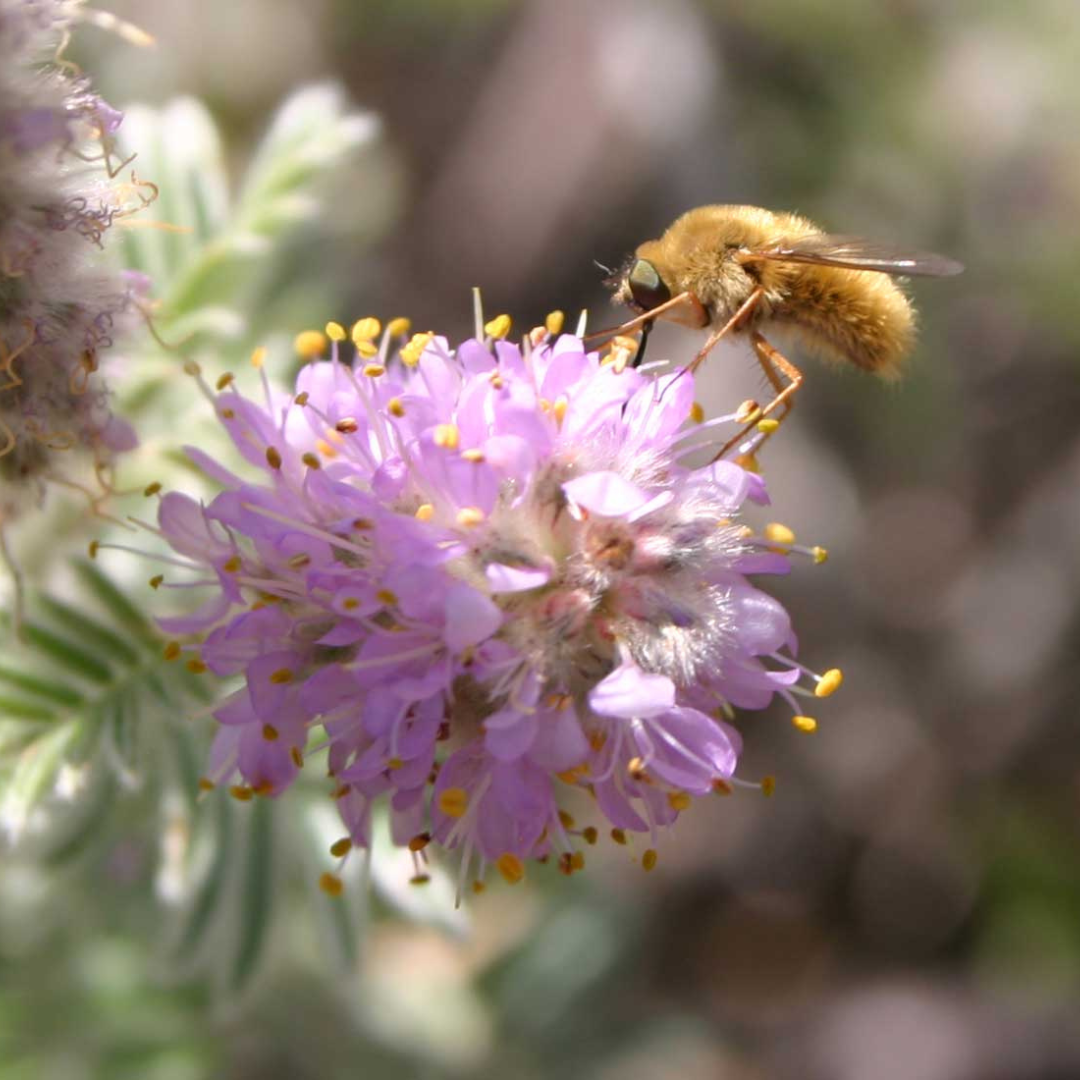
Bee flies (Systoechus vulgaris) look like pussy willows due to their fuzzy bodies.
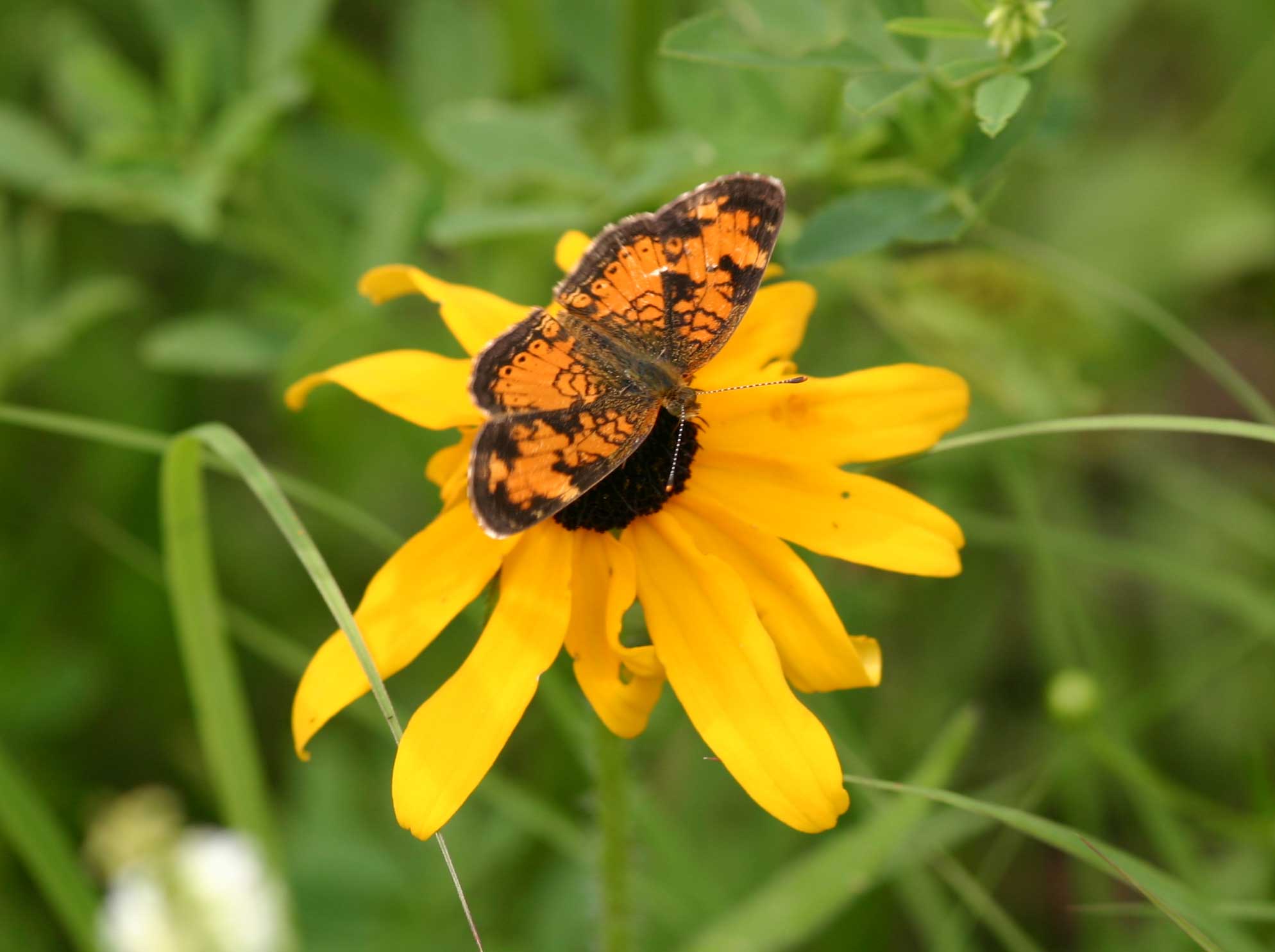
Butterflies
Butterflies are pretty easy to tell apart from bees, wasps and flies because they have large wings. But telling them apart from moths can be a bit more difficult.
Typically butterflies are active only during the day and have:
- Four large, brightly coloured wings;
- Wings that fold upright when not in flight;
- Long antennae typically with a bulb at the tip;
- Long, curled tongues.
As they have fairly long tongues, butterflies often prefer flowers with long tubes like bergamot (Monarda fistulosa). But smaller butterflies, like skippers (Hesperiidae), often like flat topped asters like black-eyed Susan (Rudbeckia hirta) and Gaillardia (Gaillardia aristata).
Image: Many butterfly species like black-eyed Susan (Rudbeckia hirta).
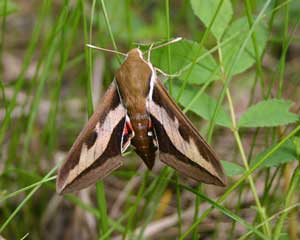
Moths
Although moths are typically active only at night (nocturnal) a few species forage during the day (diurnal) like hummingbird clearwing moths (Hemaris). Nocturnal moths prefer tubular flowers that are white but diurnal moths will visit brighter coloured plants, like hoary puccoon (Lithospermum canescens) as well.
You can tell moths apart from butterflies by their:
- Four large, often duller coloured wings, sometimes with “eye spots”;
- Wings that stay flat and out to the side when not flying;
- Long antennae that are often feather-like not clubbed;
- Long, curled tongues.
Image: Though usually active at night, you can sometimes find Sphinx moths (Hyles sp.) hanging out on vegetation during the day.
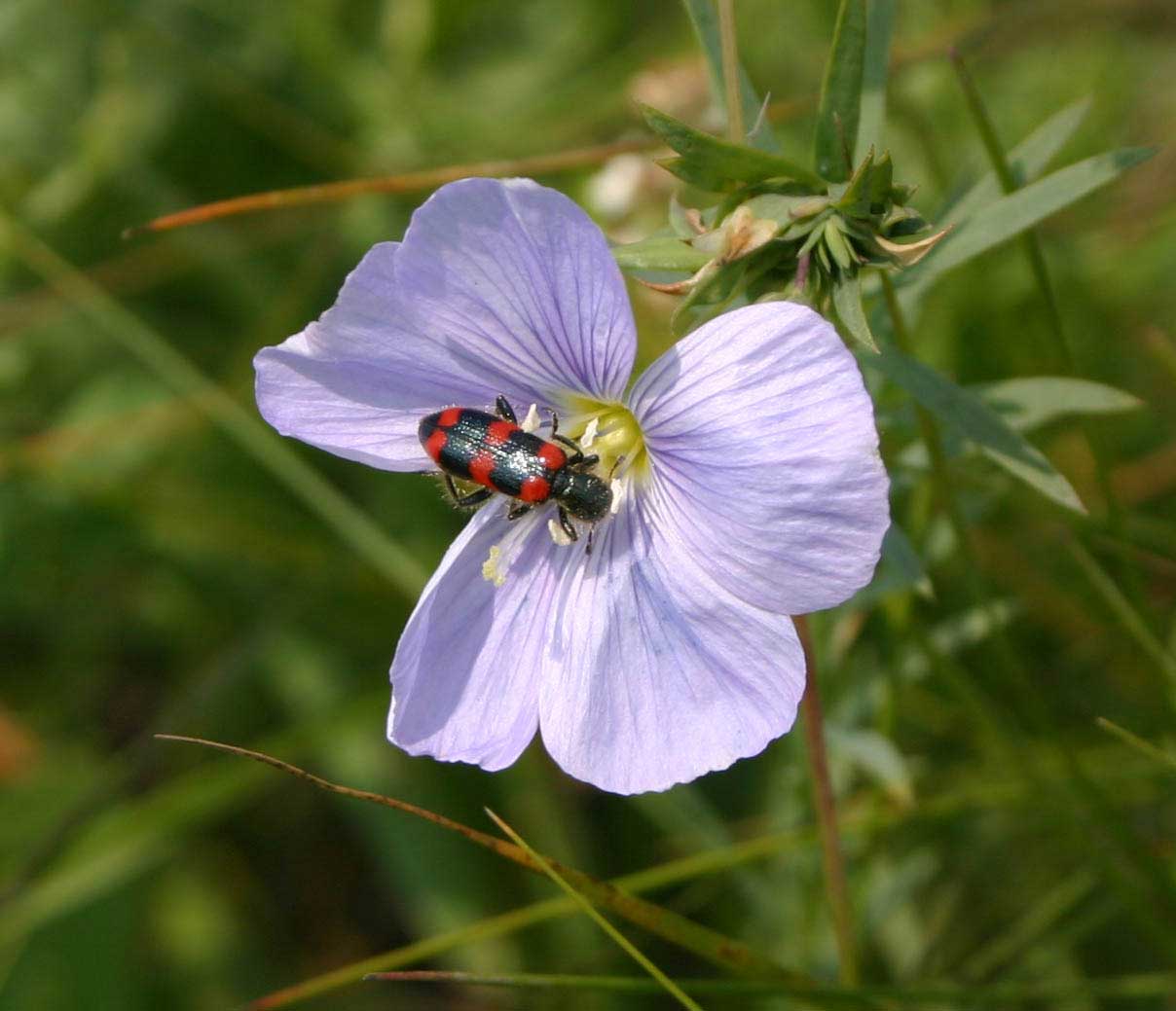
Beetles
Beetles are not the most common pollinators but there are a few species that will feed on the nectar of flowers that are flat, like woolly yarrow (Achillea millefolium).
Beetles have:
- Four wings: two membranous, two hard;
- Short or long antennae;
- No hairs;
- Short tongues.
Image: Red-checkered beetles (Trichodes nuttallii) prefer flat, open flowers like this wild blue flax (Linum lewisii).
Great web pages with image of pollinators can be found at BugGuide, here, and Xerces Society, here.
Happy pollinator watching!




